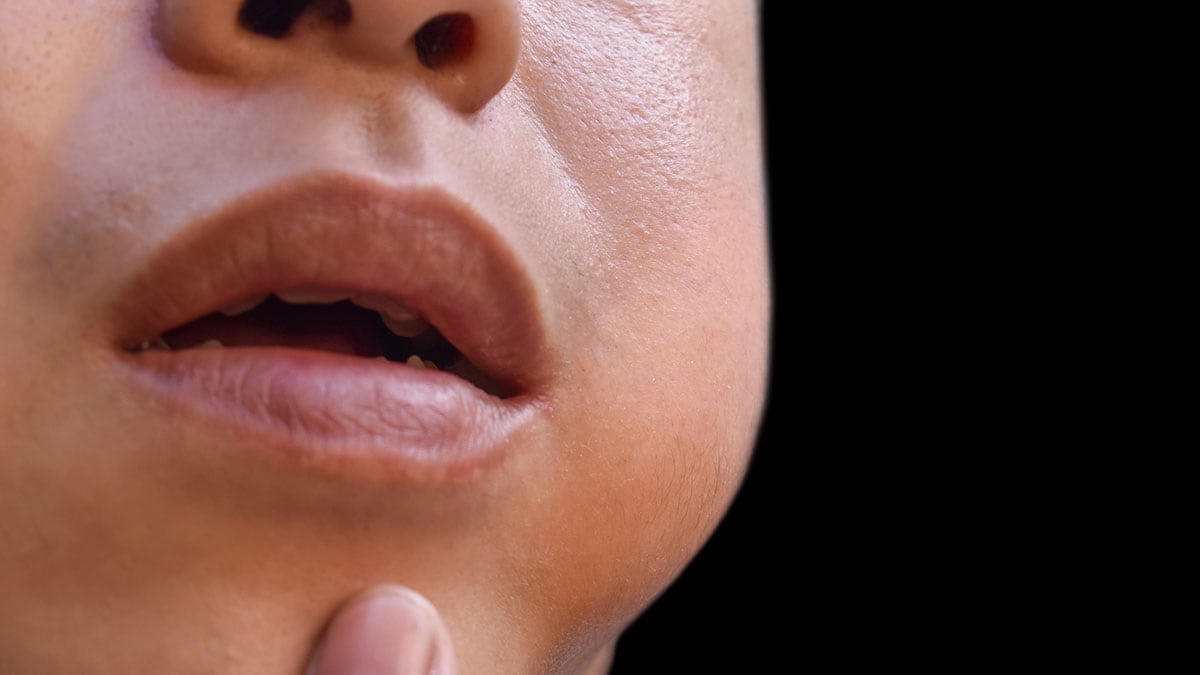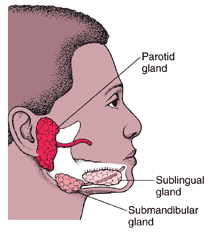Key points
- Parotitis usually lasts on average 5 days and most cases resolve after 10 days.
- Mumps infection is most often confused with swelling of the lymph nodes of the neck.
- Reinfection after natural infection and recurrent parotitis can occur in mumps patients.
- Mumps infection may also present only with nonspecific or primarily respiratory symptoms; or may be asymptomatic.

Clinical presentation
Nonspecific prodromal symptoms may precede parotitis by several days, including:
- Low-grade fever which may last 3 to 4 days
- Myalgia
- Anorexia
- Malaise and headache
Common signs
Mumps usually involves pain, tenderness, and swelling in one or both parotid salivary glands (cheek and jaw area). Swelling usually peaks in 1 to 3 days and then subsides during the next week. The swollen tissue pushes the angle of the ear up and out. As swelling worsens, the angle of the jawbone below the ear is no longer visible.

One parotid may swell before the other, and in 25% of patients, only one side swells. Other salivary glands (submandibular and sublingual) under the floor of the mouth also may swell but do so less frequently (10%). Parotitis usually lasts on average 5 days and most cases resolve after 10 days.

Mumps infection may also present only with nonspecific, or primarily respiratory, symptoms; or may be asymptomatic. Reinfection after natural infection and recurrent parotitis can also occur in mumps patients. Recurrent parotitis occurs when parotitis on one side resolves but is followed weeks to months later by parotitis on the other side.
Mumps can occur in a person who is fully vaccinated, but vaccinated patients are less likely to present severe symptoms or complications than under-vaccinated or unvaccinated cases. Mumps should be suspected in all patients with parotitis or mumps complications, regardless of age, vaccination status, and travel history.
Differential diagnosis
Mumps infection is most often confused with swelling of the lymph nodes of the neck. Lymph node swelling can be differentiated by:
- The well-defined borders of the lymph nodes.
- Their location behind the angle of the jawbone.
- Lack of the ear protrusion or obscuring of the angle of the jaw (characteristics of mumps).
While not a common symptom of flu, swelling of their salivary glands (parotitis) has been reported in persons with laboratory-confirmed influenza infections.
Complications
Mumps complications include orchitis, oophoritis, mastitis, meningitis, encephalitis, pancreatitis, and hearing loss. Complications can occur in the absence of parotitis and occur less frequently in vaccinated patients. Some complications of mumps are known to occur more frequently among adults than children.
Orchitis occurs in approximately 30% of unvaccinated and 6% of vaccinated post-pubertal male mumps patients. In 60% to 83% of males with mumps orchitis, only one testis is affected. Mumps orchitis has not been linked to infertility but may result in testicular atrophy and hypofertility.
Among adolescent and adult female mumps patients in the United States in the post-vaccine era, rates of oophoritis and mastitis have been ≤1%. However, these complications may be more difficult to recognize and are likely underreported.
Pancreatitis, deafness, meningitis, and encephalitis have been reported in less than 1% of cases in recent U.S. outbreaks. Cases of nephritis and myocarditis and other sequelae, including paralysis, seizures, cranial nerve palsies, and hydrocephalus, in mumps patients have been reported but are very rare. Death from mumps is exceedingly rare. There have been no mumps-related deaths reported in the United States during recent mumps outbreaks.
